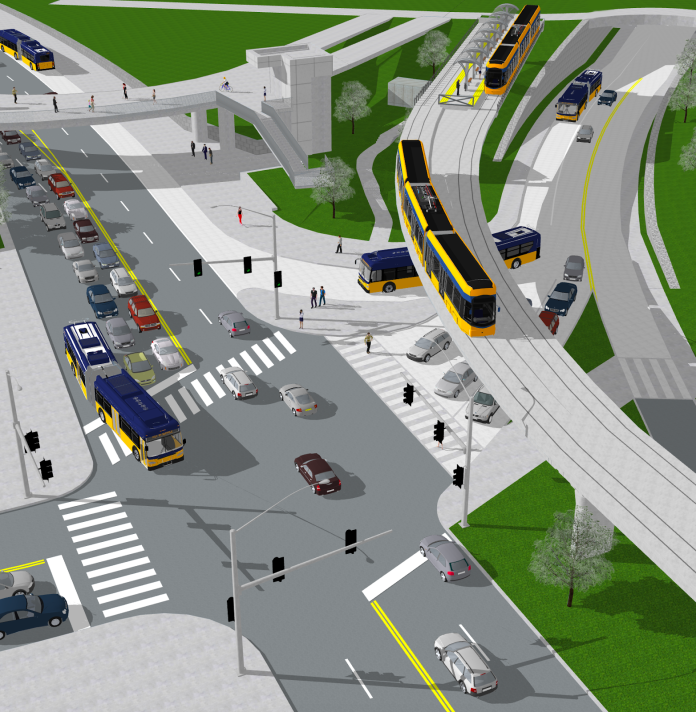
A tram line along Sand Point Way could speed up transit connections in Northeast Seattle and loosen the apartment bans blanketing much of the area.
In the past two hundred years, industrial capitalism has altered the earth’s climate in ways only nature had previously been capable of, and at a rate significantly faster than what Earth had ever seen before. Earth now delivers us a simple message: we are not above nature. The climate crisis is at our doorstep, and it disproportionately affects communities of color. Climate justice cannot wait.
Despite the promises of the past four Seattle mayors to reduce emissions, the opposite has happened. City emissions increased 1.1% between 2016 and 2018, and Seattle is far from its goal of a 58% emissions reduction by 2035. In fact, emissions in 2018 registered at about the same level as they did in 2008, dropping by only 4.4%, according to the city’s 2018 carbon inventory. This is alarming given the warnings of the United Nations that we must slash global emissions in half by 2030 to avoid irreversible and catastrophic effects from the climate crisis. It is even more alarming in the face of estimates from Seattle Pacific University that project daily flooding in South Seattle within the next 100 years as a result of the climate crisis. Seattle has a choice: invest now, or pay later.
Unsurprisingly, Seattle’s biggest climate-killing culprits are housing and transportation. Exactly 60% of Seattle’s overall greenhouse gas emissions are the result of transportation, 81% of which stem from cars and light duty trucks. Those emissions disproportionately impact communities of color, especially those living in Seattle’s Central District and Rainier Valley. Getting the city’s residents to step out of cars is among Seattle’s most critical climate solutions, comparable only to weaning our buildings from dirty natural gas. Transit justice is not just a traffic and climate solution, it is a racial justice solution, too.
Making the switch from cars to mass transit, bikes, or foot necessitates that the city re-evaluate its restrictive zoning laws (remnants of de jure segregation)–which ban apartments in 75% of the city, contributing to car dependency. With residents being priced out of the city center to distant suburbs in droves, affordable housing investment also becomes a critical climate and traffic solution. One thing is clear: housing justice is climate justice is racial justice is transportation justice. But most of all, the city must continue to invest in mass transit and expand its bike network, especially through key transportation corridors. Ensuring residents can access the region’s $54 billion dollar light rail infrastructure, too, is critical. This article presents one concrete step the city could take to move residents out of cars and onto mass transit, but it is first necessary to understand the current traffic situation of the area discussed.
Seattle’s light rail avoids much of Northeast Seattle, turning west from Husky Stadium to service the denser University District. While this was an excellent bang-for-the-buck investment, Seattle must now consider expansions to its transportation network that reliably connect every part of the city. On busy traffic corridors, grade-separated transportation is critical to move residents efficiently.
As a long-time resident of Northeast Seattle, I’m no stranger to the traffic backup on Montlake Boulevard, or the dangerous road conditions on Sand Point Way that have led to a slew of fatalities in recent years, such as the passing of 29-year-old resident David Allen. The reality of the current light rail system for residents of Northeast Seattle is that it’s almost entirely inaccessible. From the closest neighborhoods, the University of Washington Station, located outside of Husky Stadium, is a 30 minute walk away, has only paid parking, and taking the bus to the station often means sitting in Montlake traffic for up to thirty minutes at peak hours. This also presents challenges for employees of some of the area’s largest employers: thousands of workers at Children’s Hospital, the University of Washington Medical Center, University Village, the Federal Archives, and businesses up and down the corridor would benefit from transportation improvements that avoid the Montlake traffic mess.
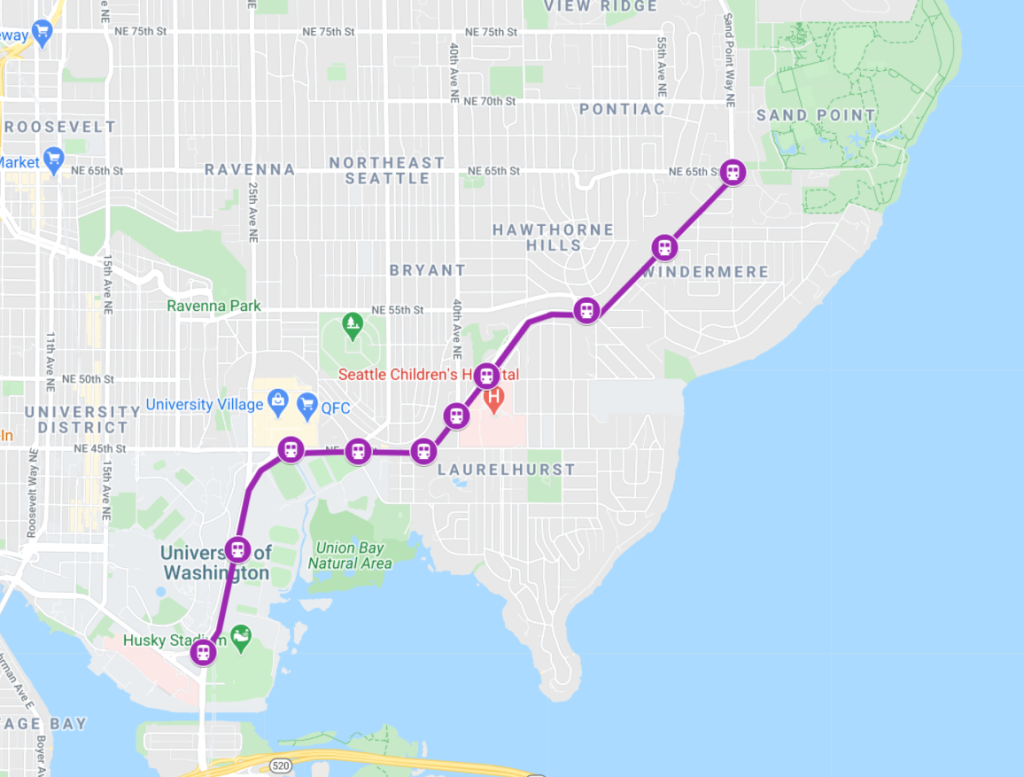
My proposal? A largely grade-separated streetcar line running from the intersection of NE 65th Street and Sand Point Way–just outside of Magnuson Park and nearby affordable housing development–to the Link light rail station near Husky Stadium and the University of Washington Medical Center.
My proposed line would terminate with an elevated station adjacent to the existing pedestrian bridge that currently connects the University of Washington campus to Link light rail and Husky Stadium, facilitating fluid transfers between light rail, bus, and streetcar. The stop would also be accessible from the Burke-Gilman Trail, allowing for easy cyclist and pedestrian connections. The conglomeration of transportation options in the area would conveniently connect all over the city: South Seattle, Downtown, the University District, Roosevelt, and Northgate, plus the Eastside, via light rail; University Village, University of Washington housing (Laurel Village), businesses along and near NE 45th Street, Children’s Hospital, further businesses along Sand Point Way near Princeton Avenue, the Federal Archives, Magnuson Park, and surrounding neighborhoods via streetcar; and the greater Seattle region through our exceptional bus system. This proposal would create an unique transit hub, right on the doorstep of the University of Washington and Husky Stadium–a perfect game day traffic solution.
Furthermore, this proposal would avoid Montlake traffic, swiftly shepherding transit riders past Montlake traffic that can sometimes take 30 minutes to get through and drastically reducing travel times for those aiming to head downtown through connections to light rail. The line would be completely grade-separated from Children’s Hospital to the intersection of Montlake Boulevard and 25th Avenue NE, where it would elevate to tracks above Montlake Boulevard paralleling the Burke-Gilman Trail.
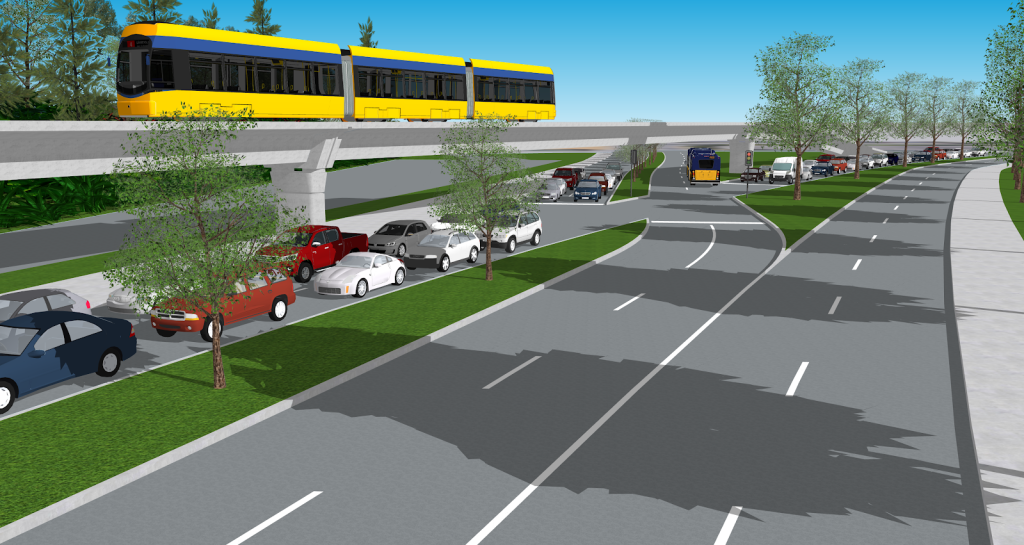
The line would make a stop just outside the entrance to University Village, providing a fluid transit connection for shoppers traveling from Northeast Seattle neighborhoods or those who wish to travel from other neighborhoods via light rail. Continuing down the corridor, the line would make an additional stop at the large five-way intersection of Union Bay Place NE/Mary Gates Memorial Drive, NE 35th Street, and NE 45th Street, servicing the soon-to-be constructed Aegis Retirement facility, Laurel Village (University of Washington housing), nearby medical offices, area residents from nearby apartment developments and the Laurelhurst and Bryant neighborhoods, and numerous businesses. This stop would also come with improved bike connections stretching down NE 35th Street from the Burke-Gilman Trail, as well as a bike path stretching out of Laurelhurst on Mary Gates Memorial Drive that ensures the safety of cyclists crossing the streetcar tracks. At-grade boarding via the streetcar station platform makes riding the streetcar a cinch for people with mobility challenges.
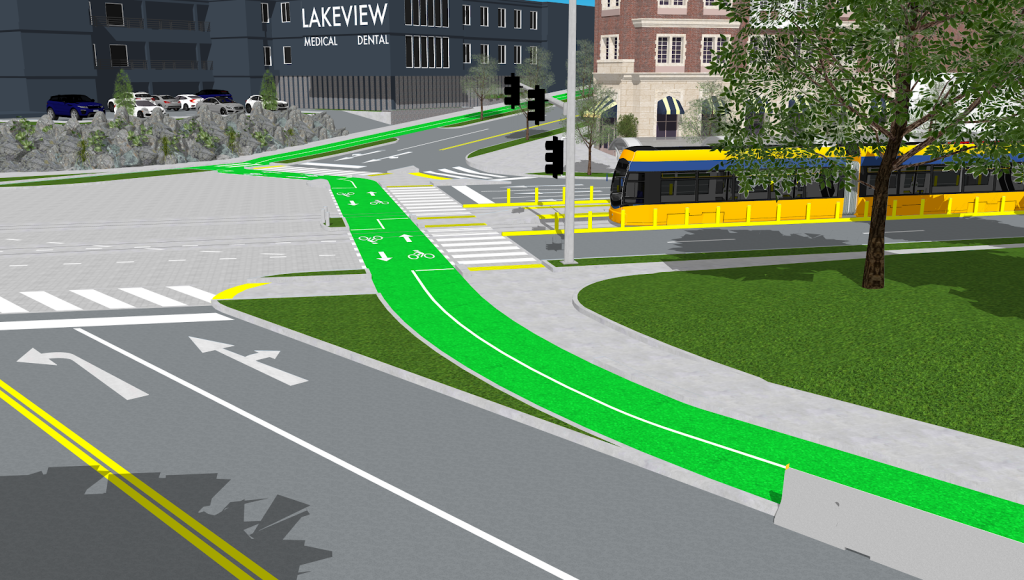
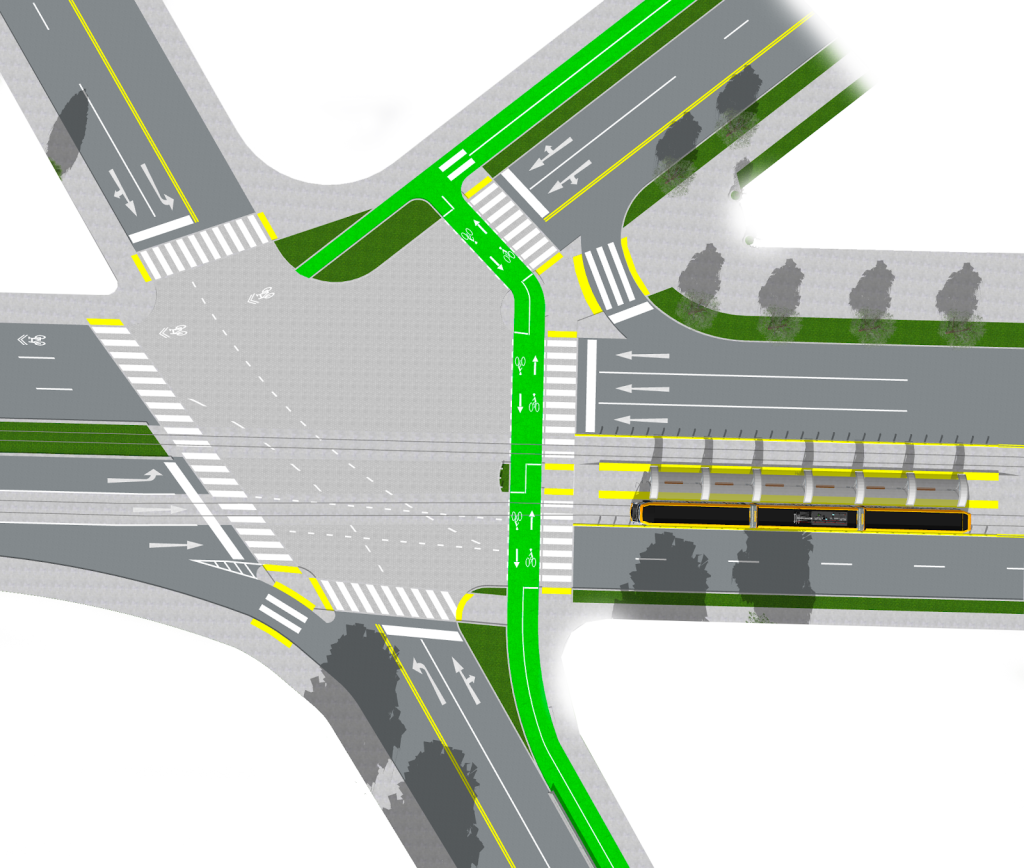
The rest of the line would travel down NE 45th Street and, later, Sand Point Way, making several stops near Children’s Hospital, Burke Gilman Place Apartments and nearby residential housing, and the short business corridor at the intersection of Princeton Avenue and Sand Point Way, by the Burke-Gilman Trail and Hawthorne Hills neighborhood. This proposal comes with necessary traffic-calming measures–specifically, curb bulbs and reduced lane widths–throughout this corridor, which currently has lanes that in many places meet federal highway standards of up to 15 feet wide. Alongside these traffic-calming measures comes bike network improvements–namely, the continuation of the short elevated bi-directional bike path currently constructed outside of Children’s Hospital all the way down Sand Point Way. This ensures the safety of cyclists traveling near the streetcar tracks from both cars and possible rail hazards.
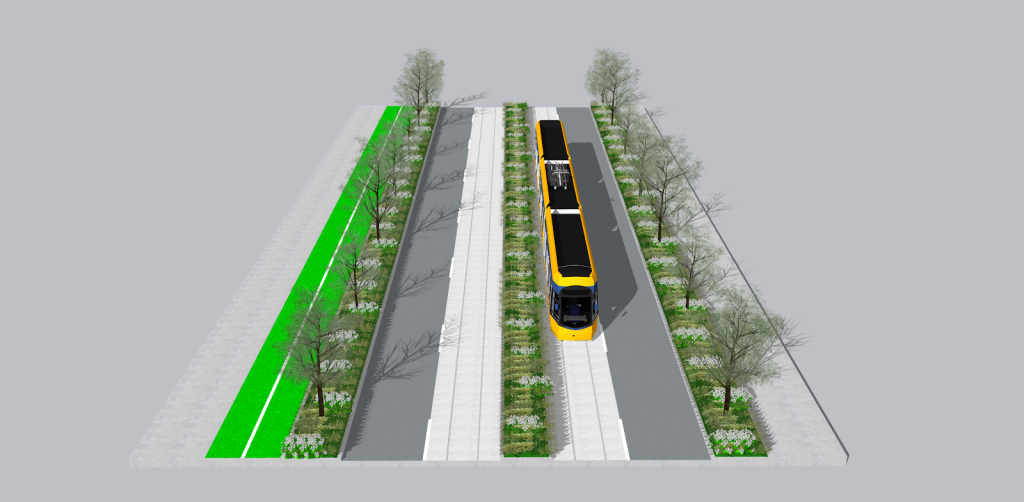
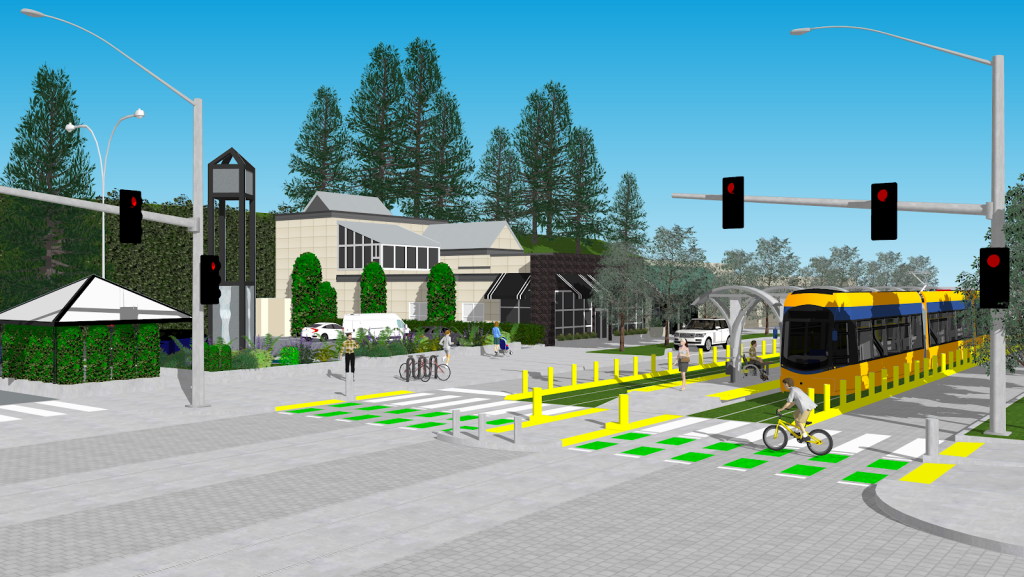
Making only one more stop outside the Windermere neighborhood and the Federal Archive building (which must be protected) before the end of the line, this proposal ultimately connects several major employers and numerous businesses, as well as multiple neighborhoods, to light rail and the broader bus hub near Husky Stadium. The final stop, just on the edge of Magnuson Park, would connect bike lanes on 65th and the Burke-Gilman Trail to the streetcar line, while also servicing new affordable housing development within Magnuson Park, Parkpoint Condominiums, and other nearby residential housing.
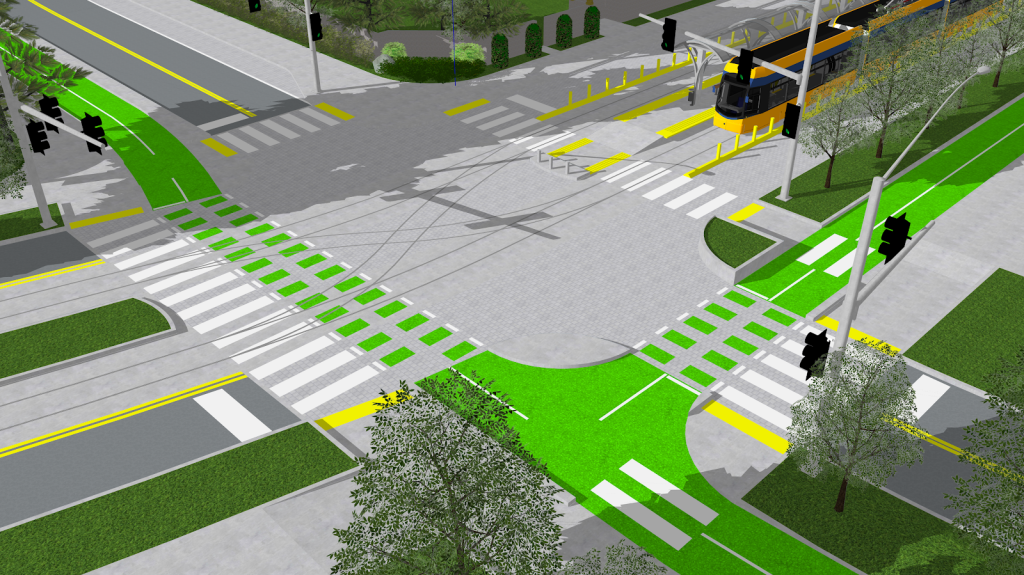
While many pockets of Sand Point Way and Montlake Boulevard are woefully underutilized low-density commercial and single-family zones, the city must take a hard look at the zoning changes necessary to provide current and future residents with robust car-free solutions. Seattle will continue to rapidly grow over the next 15 years: 120,000 new residents will make Seattle their home, and employers will add 115,000 new jobs within city limits. Whether we like it or not, there will be development in Seattle.
It is essential that Seattle distributes development equitably. Development has costs, and, as The Urbanist has previously noted, we cannot allow those costs to fall disproportionately on those who are least able to pay them. This transit proposal cannot be so short-sighted as to move only current residents and serve only the current housing stock of Northeast Seattle. The city must build more housing along Sand Point Way in anticipation of the population growth that we will continue to see over the next two decades, and it must build more housing along this corridor so that thousands of residents have access to the fruits of this transit proposal. Technically State Route 513, Sand Point Way, NE 45th Street, and Montlake Boulevard have an abundance of malleable space, the corridor is perfectly situated for transit-oriented development.
Unlike other corridors of the city, the streetspace is not narrowly confined, it’s capable of providing the high-quality bike, transit, and pedestrian infrastructure the city will need to accommodate future population growth. Walkable, bikeable, and transit-accessible development–development that mixes publicly-owned affordable housing with private apartment development and business space that expands the city’s bike network and creates pleasant pedestrian environments alongside a robust transit system–is unequivocally Seattle’s greatest housing, climate, and traffic solution. Sand Point Way, and NE 45th Street, are prime candidates for these changes. This transit proposal must go hand in hand with these zoning considerations, delivering new housing density right alongside local businesses, the Burke-Gilman trail, and a mass transit line that integrates with the city’s light rail network.
This proposal is the transit solution Northeast Seattle residents need to avoid the Montlake traffic mess. It would drastically lower car trips on the corridor by providing a high-capacity alternative to driving that efficiently serves the University of Washington light rail station. It would be a grade-separated blessing to transit users and would fill a significant service gap in Seattle’s newest rail lines. It would move employees and customers between some of the area’s largest employers and small businesses alike. And it all happens by taking drivers out of their cars and providing them with a clean, quick, mass transit alternative alongside critical bike network expansion. Integrating buses, the Burke-Gilman Trail, light rail, and streetcar, my proposal would tie together Northeast Seattle. In a city swimming with money and booming development, in the face of a looming climate crisis, and knowing that our cars contribute the greatest to this crisis, it is imperative that we make urgent moves to expand our bike and mass transportation infrastructure. We have no time to waste.
Joe Mangan (Guest Contributor)
Joe Mangan is an urban studies and political science double major at Vassar College. He organized the Seattle Climate Strike, led weekly strikes outside Seattle City Hall as the founder of Fridays for Future Seattle, and was later a coordinator with the Seattle for a Green New Deal campaign. His redesign of NE 65th Street was declared “Better Than SDOT’s” by the Seattle Bike Blog.

